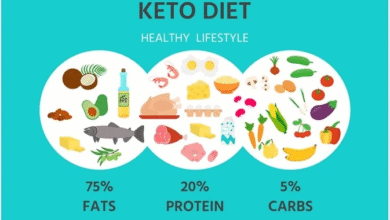Harmful Chemicals in Vapes !! What You’re Really Inhaling

Harmful Chemicals in Vapes !! What You’re Really Inhaling
A recent study has raised serious alarms about what electronic cigarette users may unknowingly be inhaling. The research found that vapes contain thousands of chemicals, many of which are unlisted, unknown, and potentially harmful—including industrial compounds and caffeine. These findings challenge the common perception that vaping is a safer alternative to traditional smoking.
This article explores the study’s results, explains the hidden dangers of vaping, and highlights why young people may be especially vulnerable.
The Study: A Deeper Look into Vape Liquids
Published in the journal Chemical Research in Toxicology, this groundbreaking study used advanced chemical fingerprinting techniques—typically applied in food safety and wastewater analysis—to evaluate the contents of vape liquids and aerosols.
Researchers examined four of the most popular vape brands: Juul, Blu, Vuse, and Mi-Salt, applying high-resolution mass spectrometry and chromatography to detect both known and unknown substances.
What they found was alarming: nearly 2,000 distinct chemical compounds, the majority of which had never before been identified in vaping products. Many of these compounds had no safety data, making their short- and long-term health effects unknown.
What Was Discovered: A Toxic Cocktail
Among the thousands of chemicals identified in vape liquids and vapors, researchers found:
- Hydrocarbon-like compounds: These are often linked with combustion and toxic exposure.
- Solvents and industrial chemicals: Some were used in manufacturing but not listed as ingredients.
- Flavoring agents: While not inherently dangerous, their behavior when vaporized is poorly understood.
- Caffeine: Surprisingly detected in two products, even though it was not labeled or expected except in “coffee-flavored” variants.
- Potential toxins: At least six compounds were flagged as potentially hazardous, though their long-term impact through inhalation remains unstudied.
This mix of substances reveals that vape users are being exposed to far more than they realize—and not all of it is benign.
Vapes vs. Traditional Cigarettes: A False Sense of Security
One of the study’s lead researchers, Dr. Carsten Prasse, an environmental health expert, noted:
“While e-cigarettes may contain fewer known carcinogens than traditional cigarettes, the presence of numerous unidentified chemicals introduces a new realm of risk.”
This challenges the widespread notion that vapes are significantly safer. In reality, the lack of transparency and regulation surrounding vape ingredients may represent a different, but equally serious, threat to health.
How Are These Chemicals Getting Into Vapes?
The vape manufacturing process is complex. While some companies list their ingredients, many do not—especially in international or unregulated markets. Chemicals may enter the product during:
- Flavoring formulation: Artificial flavors may contain hundreds of sub-compounds.
- Heating coil interactions: Metals and plastics can leach into the liquid when heated.
- Contamination: Cross-contamination from equipment or packaging can introduce unknown agents.
- Decomposition: Some compounds form only after heating, meaning they may not be present in the liquid but form during vaping.
As a result, even the best-known vape brands may contain unintended chemical byproducts.
Are These Chemicals Harmful? Science Says: We Don’t Know Yet
One of the most troubling findings is not just the presence of chemicals—but the uncertainty around their effects. Most of the newly identified compounds have never been tested for inhalation safety.
Here’s what we do know:
- Caffeine inhalation can cause jitteriness, heart palpitations, or even anxiety in sensitive individuals.
- Industrial solvents may damage lung tissue over time.
- Hydrocarbon exposure has been linked with inflammation and impaired respiratory function.
But for hundreds of substances, there’s no data at all—which is especially dangerous for young or frequent users.
Why Are Young People at Greater Risk?
According to the Centers for Disease Control and Prevention (CDC), vaping among teenagers and young adults has surged in recent years. Many have never smoked traditional cigarettes before, meaning their first nicotine exposure is through flavored vapes.
This presents several problems:
- Higher sensitivity to toxins due to developing lungs and immune systems
- Increased likelihood of addiction from early nicotine exposure
- Misunderstanding of risks due to marketing as a “safe alternative”
Dr. Ana M. Rule, an expert in environmental exposure at Johns Hopkins University, warns:
“Millions of high school and middle school students are inhaling substances that could have unknown and long-term consequences.”
Health Risks Associated with Unknown Vape Chemicals
Though more research is needed, scientists suspect that inhaling unidentified chemicals could be linked to:
- Chronic bronchitis
- Lung inflammation
- Cardiovascular strain
- Weakened immune response
- Allergic reactions and asthma flare-ups
Additionally, Vitamin E acetate, found in some black-market THC vapes, was previously identified as the primary cause of EVALI (E-cigarette or Vaping Use-Associated Lung Injury), a condition that hospitalized thousands and killed over 60 people in the U.S. alone.
This shows that what’s not known can still be deadly.
What Can Be Done: Recommendations for Consumers and Policymakers
If you use vapes—or are considering it—there are steps you can take to reduce your risk:
- Avoid unregulated or generic vape brands
- Stick to transparent companies that publish their ingredients
- Don’t assume “fruit-flavored” equals safe
- Watch for symptoms like coughing, chest tightness, or shortness of breath
- Seek alternatives to nicotine delivery, such as patches or gum
For policymakers, the study suggests the need for:
- Stricter ingredient disclosure laws
- Mandatory pre-market testing of vape products
- Clearer labeling of additives and potential toxins
- Targeted education campaigns for youth and parents
Conclusion: An Unseen Health Crisis in the Making?
This study highlights an unsettling truth: even products marketed as “cleaner” or “safer” may hide risks that science has yet to uncover. Vaping is not just about nicotine—it’s about a cocktail of chemicals that you can’t see, smell, or understand.
As the use of vapes continues to rise, particularly among young people, more research, regulation, and education are urgently needed.
Until then, users must ask themselves:
Is it worth inhaling something when you don’t even know what’s in it?






